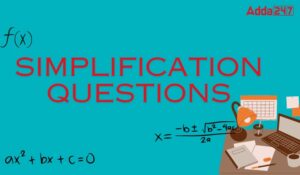Dear Students,
Quantitative Aptitude Questions for IBPS Exam
Quantitative Aptitude is a very important section you must prepare if you are aiming for a job in Bank or Insurance sector. These two weeks are very important as IBPS PO and IBPS Clerk Exams are lined up. So, these 15 questions can help you practice three very important topics of Quant Section.
Directions (1 – 5): What will come in place of question mark in the following series?
Q1. 1, 8, 33, 94, 215, ?
(a) 426
(b) 416
(c) 571
(d) 345
(e) 631
Q2. 24, 22.5, 25.5, 21, ?, 19.5
(a) 28
(b) 25
(c) 27
(d) 30
(e) 33
Q3. 9, 3, 2, 2, 2.667, ?
(a) 9.54
(b) 7
(c) 5
(d) 3.56
(e) 4.445
Q4. 35, 24, 34, 25, 33, ?
(a) 28
(b) 26
(c) 41
(d) 23
(e) 19
Q5. 1, 31, 161, 791, ?
(a) 5153
(b) 3052
(c) 2520
(d) 4021
(e) 3921
Q6. The average of 6 observations is 45.5. If one new observation is added to the previous observation, then the new average becomes 47. The new observation is :
(a) 58
(b) 56
(c) 50
(d) 46
(e) None of these
Q7. The average age of 40 students of a class is 15 years. When 10 new students are admitted, the average age is increased by 0.2 years. The average age of the new students is :
(a) 15.2 years
(b) 16 years
(c) 16.2 years
(d) 16.4 years
(e) None of these
Q8. The mean weight of 120 students in the second year class of a college is 56 kg. If the mean weight of boys and that of the girls in the class are 60 kg and 50 kg respectively, then the number of boys and girls in the class are respectively:
(a) 72,64
(b) 38,64
(c) 72,48
(d) Can’t be determined
(e) None of these
Q9. A reduction of 20% in the price of rice enables a person to buy 3.5 kg more rice for Rs 385. The original price of rice is :
(a)Rs 20 per kg
(b) Rs 22.50 per kg
(c) Rs 25 per kg
(d) Rs 27.50 per kg
(e) None of these
Q10. A’s income is 20% more than that of B. By how much percent is B’s income is less than that of A?
Directions (11-15): In each of the following questions two equations are given. You have to solve the equations and Give answer—
(a) if x<y
(b) if x≤y
(c) Relationship between x and y cannot be determined
(d) if x≥y
(e) if x>y





 Simplification Questions For Bank Exams ...
Simplification Questions For Bank Exams ...
 Quantity Comparison Questions for Bank E...
Quantity Comparison Questions for Bank E...
 Mixture & Alligation Questions for B...
Mixture & Alligation Questions for B...







